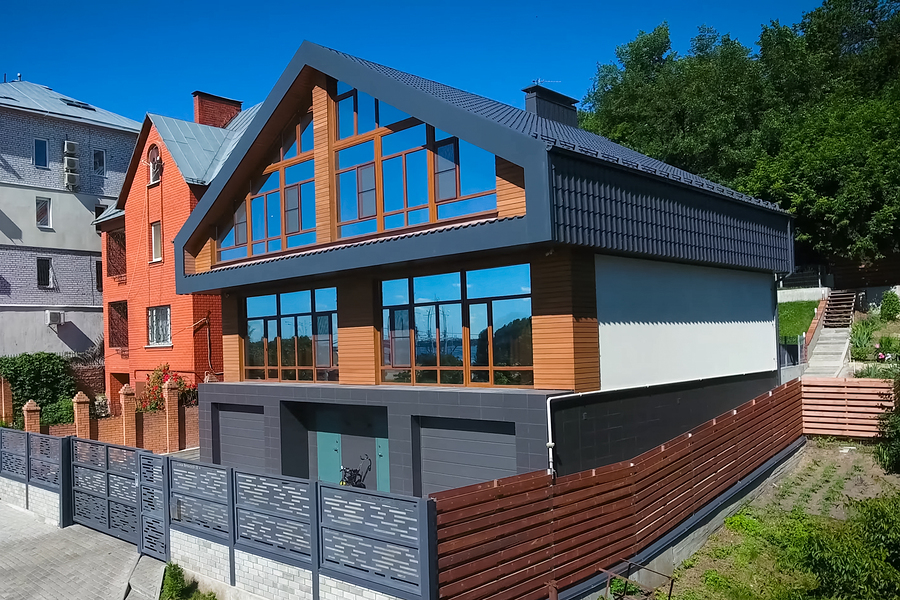Living in Florida has many advantages; 1350 miles of pristine coastline, year round sunshine, and unparalleled natural beauty. But there is a price to living in paradise, and that price can have a big impact on your roofing decision. Knowing the best roof replacement choices and the best new roofing installation options are the first step in securing your home for the future.
Ever since Hurricane Andrew’s $25 billion impact in 1992, the game has changed. Building codes in high velocity hurricane zones have evolved drastically and contractors need special licensing in every county in Florida. Aside from salt air, sun, and wind, these codes will have a huge impact on what your options are for your domicile.
As a homeowner, you need to consider price, pragmatism, longevity, and building codes when choosing the right roof for your home, which is why we compiled information on the most popular types of roofs below.
Replace Your Roof With Clay and Slate
 Typically these two options are grouped together because they hold many of the same advantages and disadvantages. Clay and slate both offer superb protection from wind damage and also carry with them long warranties due to their durability. Both can withstand winds of over 100 miles per hour and hold up well to salt air. They’re also both flame retardant and insect resistant.
Typically these two options are grouped together because they hold many of the same advantages and disadvantages. Clay and slate both offer superb protection from wind damage and also carry with them long warranties due to their durability. Both can withstand winds of over 100 miles per hour and hold up well to salt air. They’re also both flame retardant and insect resistant.
The downside to these roofs is that they typically require a very sturdy frame due to their heavy weight. Clay also tends to crack when exposed to hail or debris (a disadvantage that doesn’t carry over to slate).
Clay usually starts at around $15 per square foot whereas slate costs a little more. This means that they are a bit pricier than other options, but also carry with them 50-100 years of life with little to no maintenance.
Time to Replace the Wood
Wood can be a beautiful option for some styles of home, but also carries with it a few considerations to be made. When it comes to wind, most wooden roofs today can withstand winds of over 200 miles per hour, making them a great option for high velocity wind zones. They also hold up well to salty air, making them very practical for sea side villas.
The issue with wood is that it is highly flammable and prone to insect damage. It is also difficult to install and must be replaced much more often than other roofing options. From a price perspective, wood is the more moderate option, typically costing around $10 per square foot.
Concrete Roof Shingles
Concrete may not be the most popular roofing option, but it does certainly have its place. Concrete is, of course, one of the strongest types of roof you can purchase for your home. From a debris perspective, it can withstand much more damage than most of the other options on this list. It can also withstand very high winds and corrosion, which is always something to consider on the coast.
With all that being said, there are a few disadvantages to concrete roofs. One of them being the weight; this option is heavier than both clay and slate and therefore requires a very sturdy foundation. Concrete also tends to fade much more than other options and can crack with extreme temperature fluctuations. It is also much more difficult to replace a concrete roof when compared to the other options on this list.
Prices vary depending on a few factors, but concrete will generally start at around $10 per square foot.
Metal Roofing
In some regards, metal is almost the black sheep of roofing options and one of the last considered by most coastal homeowners. Aesthetically, many people find that these roofs may take away from  some of the charm of older style homes. There is also a misconception that metal tends to corrode and that it does not stand up to wind as well due to it typically coming in a larger sheet format. There have, however, been many strides made in this category over the past few decades making this option more alluring than ever.
some of the charm of older style homes. There is also a misconception that metal tends to corrode and that it does not stand up to wind as well due to it typically coming in a larger sheet format. There have, however, been many strides made in this category over the past few decades making this option more alluring than ever.
Metal roofs don’t burn, provide no sanctuary for insects, and are highly customizable. They can also be coated to make them more resistant to corrosion and can withstand winds of up to 160 miles per hour. Options to disguise the metal as slate or clay are also currently available.
Regarding price, metal varies depending on which options you choose, but typically starts at around $10 per square foot making it one of the more economic options.
A Note on Asphalt Shingles
Despite being the most popular option on the market, asphalt is not a great choice for coastal homeowners. Traditional asphalt can only withstand winds of up to 60 miles per hour before peeling and usually carries with it the shortest term warranties. It also doesn’t hold up to salt air and tends to leak when not properly maintained. Though it is one of the least expensive options (sometimes as low as $5 per square foot), that cost will rise in the long term with repair and replacement. Architectural shingles are a great compromise between asphalt and expensive choices like clay.
The Final Roof Replacement Standings
When all factors from price to durability are considered, we would rank the materials as follows:
- First Place – Metal
- Second Place – Slate
- Third Place – Clay
- Fourth Place – Wood
Special circumstances always exist where this order could be changed around or where a concrete roof may work, but for the majority of homes I would say this list makes the most sense. As always, make sure to confer with a professional before making your final decision.
For the best roof replacement in Southwest Florida, contact our Naples or Fort Lauderdale offices for a free roofing estimate!





